Abstract
An analysis was made of 111 consecutive cases of puerperal thromboembolism by the age, parity, mode of delivery, and lactation habit of the women concerned, and the findings were compared with those from control groups.
The statistics show that inhibition of lactation by means of ethinyloestradiol is associated with a threefold increase in thromboembolism, although the effect is seen mainly in women who have an operative delivery and who are aged more than 25 years. Among women aged more than 35 years who have an assisted delivery, inhibition of lactation is accompanied by a tenfold increase in the incidence of puerperal thromboembolism.
Advancing age and operative intervention (especially caesarean section) are in themselves predisposing causes of deep venous thrombosis and embolism. They can also constitute indications for inhibiting lactation. This makes it difficult to assess whether the relation of thromboembolism to inhibition of lactation or to the administration of oestrogen is real or apparent. Doubts on the interpretation of the findings are raised by the fact that the number of fatal cases of puerperal thromboembolism in England and Wales, and of non-fatal cases in the hospitals under review, has not increased in recent years despite a progressive decrease in breast-feeding. Nevertheless, the evidence suggests that although the administration of ethinyloestradiol is not by itself enough to cause puerperal thromboembolism, it may be a factor which can tip the scales in women who are already predisposed to suffer this condition.
Any thromboembolic hazard associated with administration of oestrogens for inhibiting lactation is probably acceptable except in women known to be at special risk by reason of age, operative delivery, obesity, and a past history of thromboembolic episodes.
Full text
PDF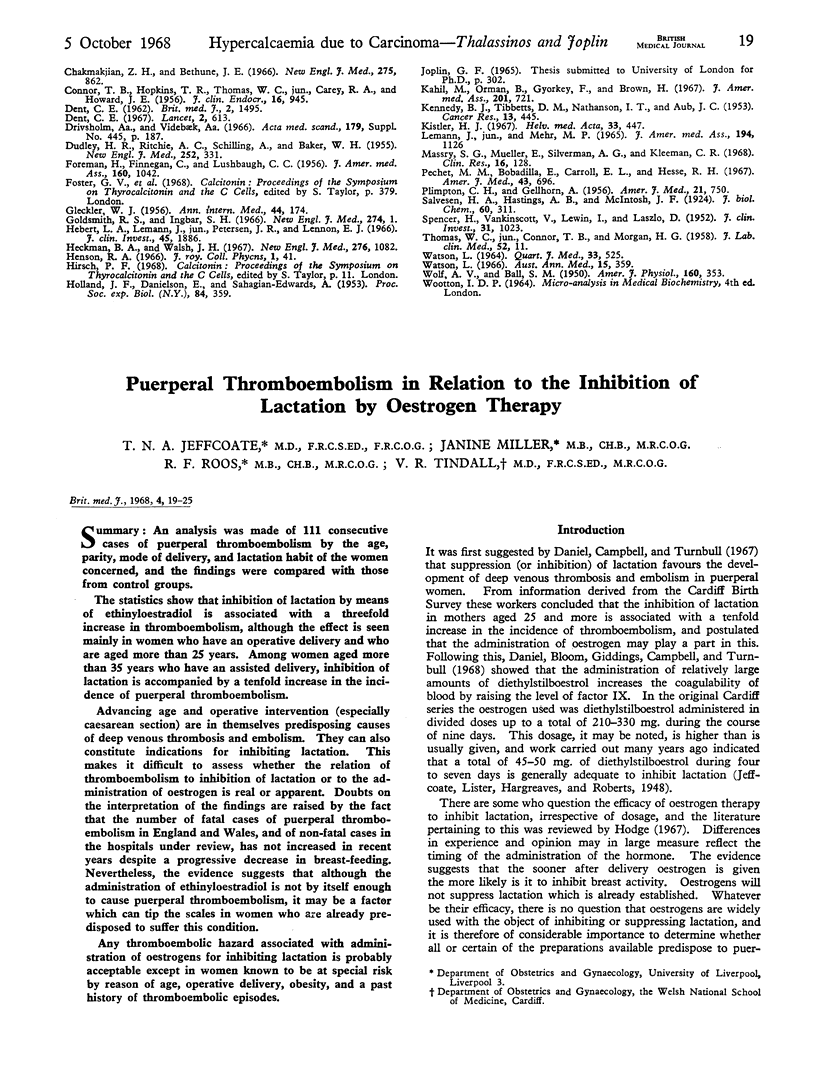
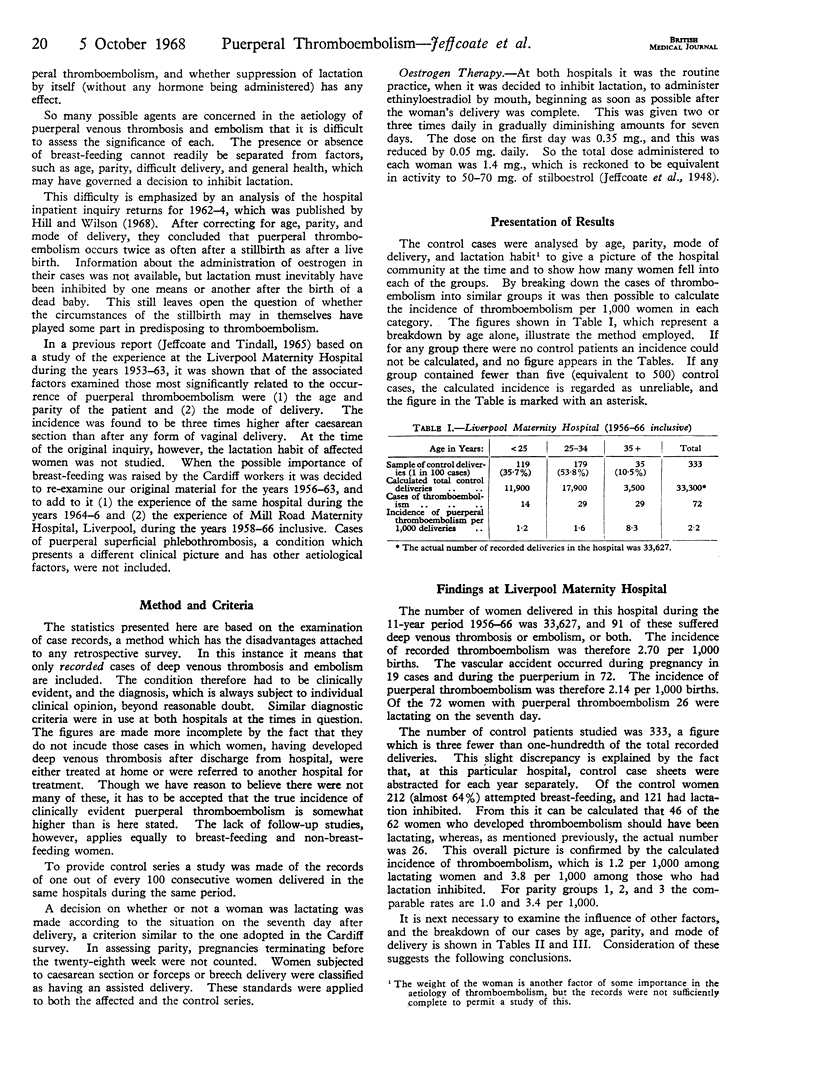
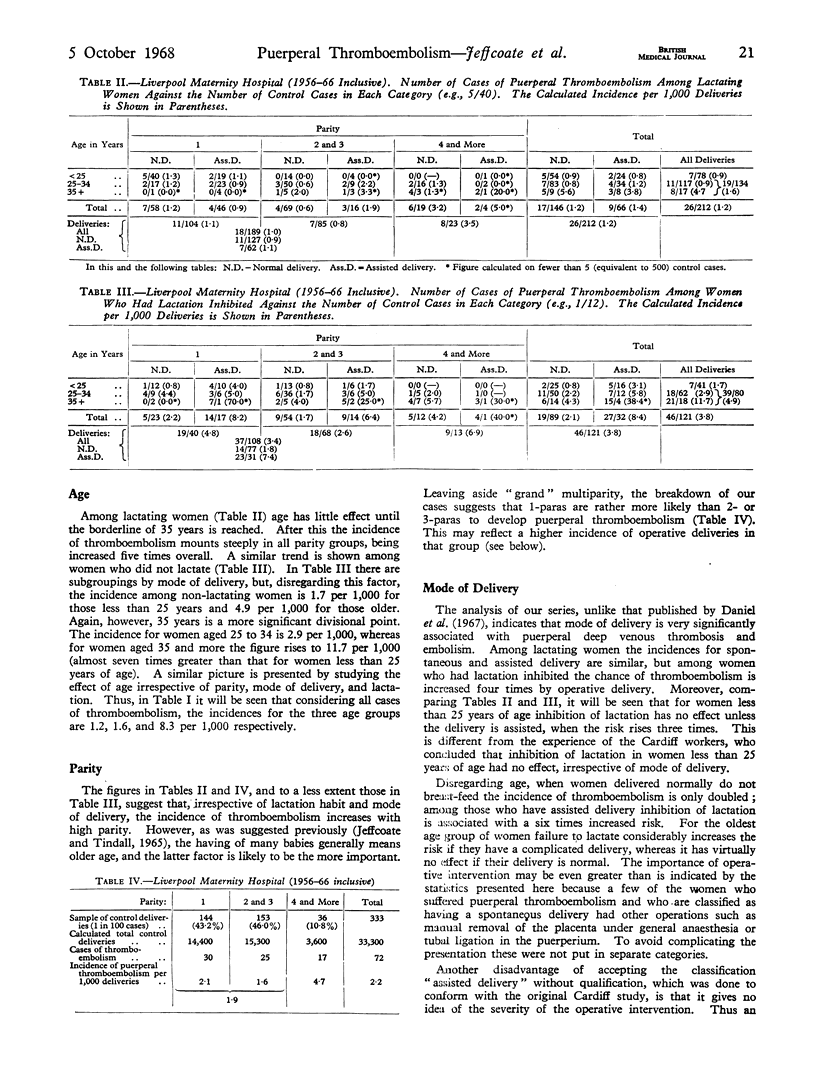
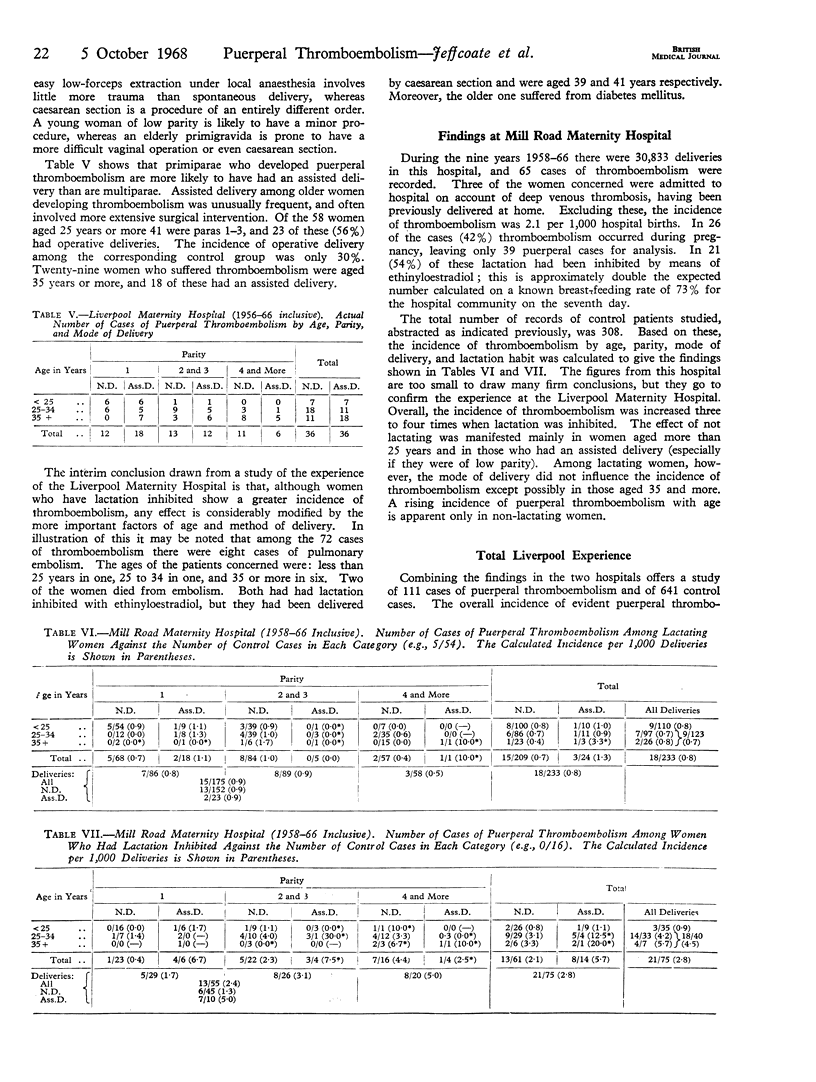
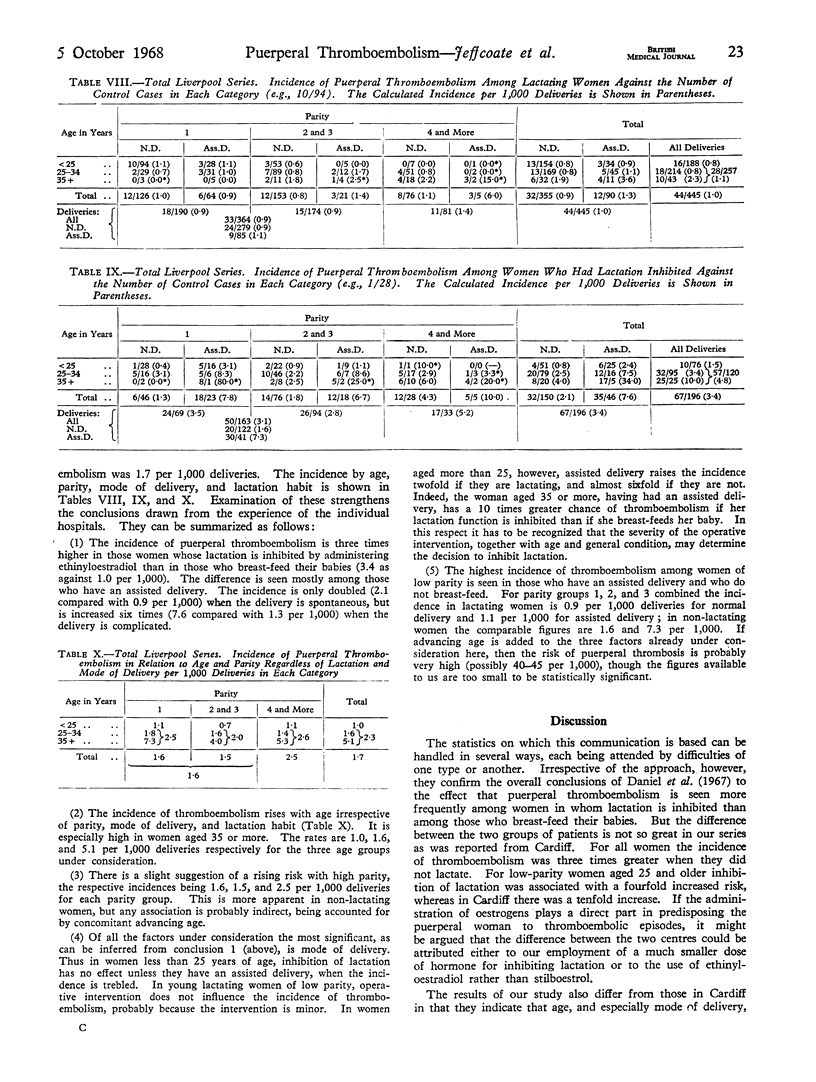
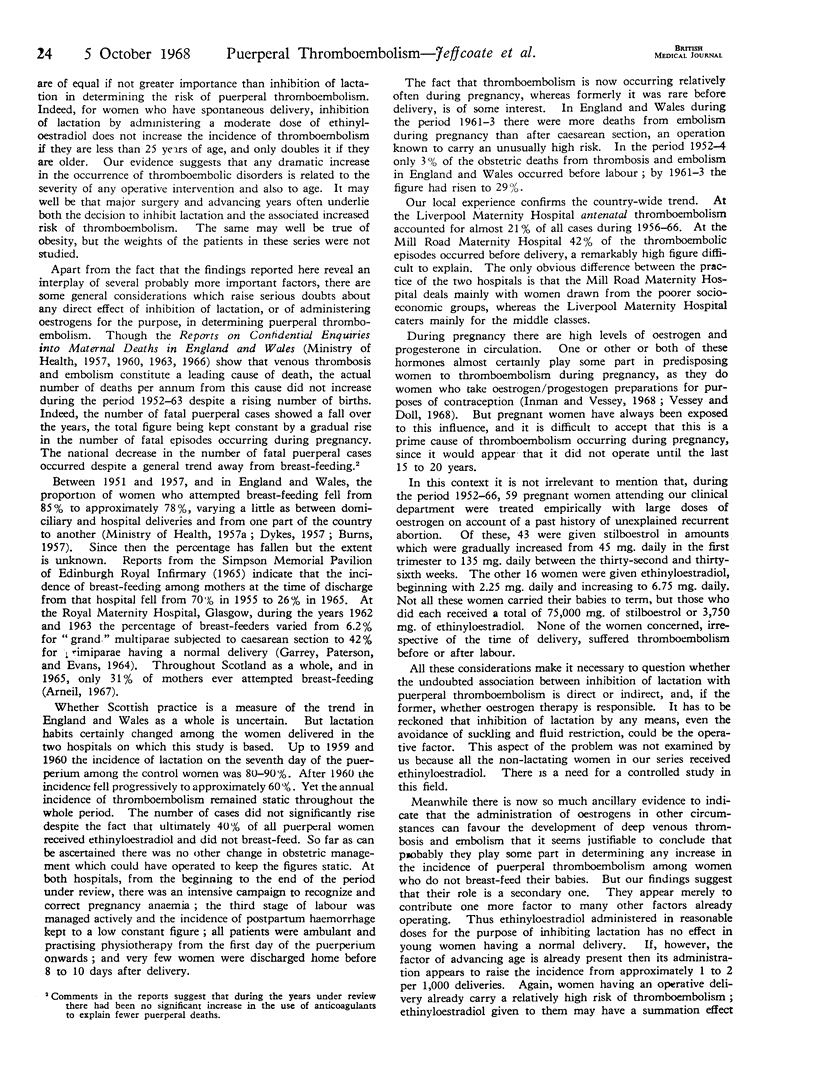
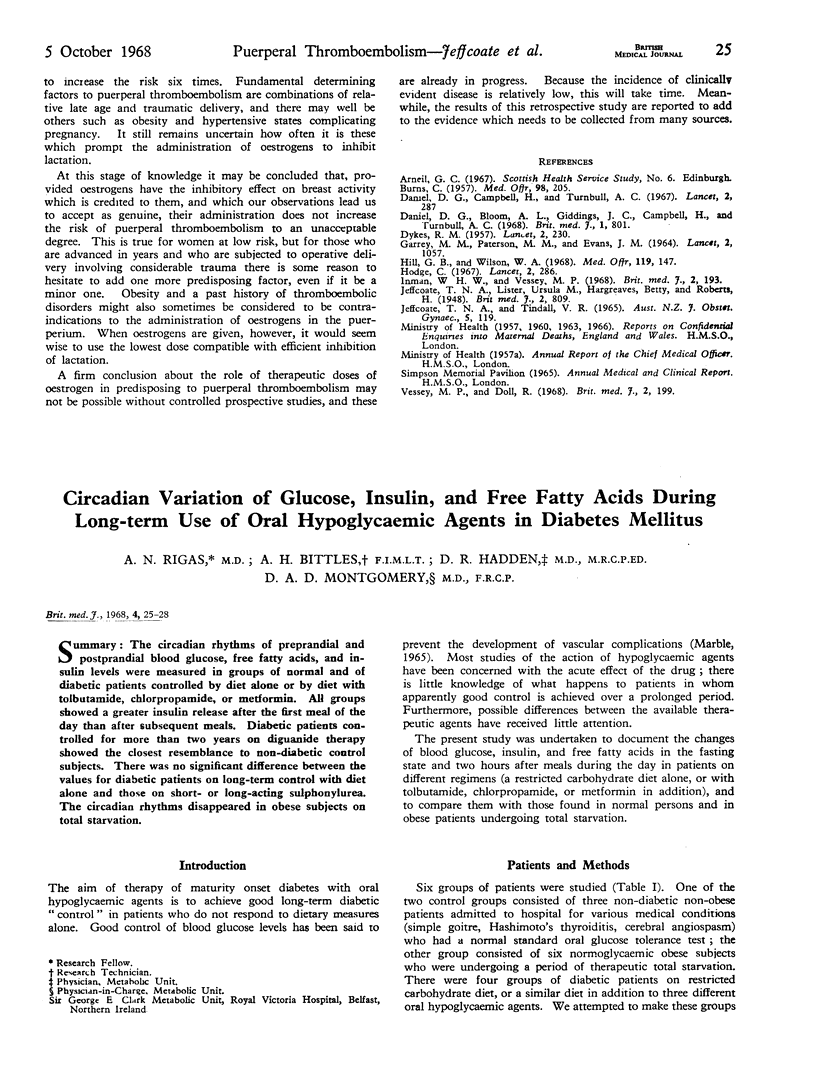
Selected References
These references are in PubMed. This may not be the complete list of references from this article.
- Daniel D. G., Bloom A. L., Giddings J. C., Campbell H., Turnbull A. C. Increased factor IX levels in puerperium during administration of diethylstilboestrol. Br Med J. 1968 Mar 30;1(5595):801–803. doi: 10.1136/bmj.1.5595.801. [DOI] [PMC free article] [PubMed] [Google Scholar]
- GARREY M. M., PATERSON M. M., EVANS J. M. SOCIAL CONDITIONS, ABNORMALITY, AND LENGTH OF STAY IN A MATERNITY HOSPITAL. Lancet. 1964 Nov 14;2(7368):1057–1058. doi: 10.1016/s0140-6736(64)91005-0. [DOI] [PubMed] [Google Scholar]
- Hodge C. Suppression of lactation by stilboestrol. Lancet. 1967 Aug 5;2(7510):286–287. doi: 10.1016/s0140-6736(67)90116-x. [DOI] [PubMed] [Google Scholar]
- Inman W. H., Vessey M. P. Investigation of deaths from pulmonary, coronary, and cerebral thrombosis and embolism in women of child-bearing age. Br Med J. 1968 Apr 27;2(5599):193–199. doi: 10.1136/bmj.2.5599.193. [DOI] [PMC free article] [PubMed] [Google Scholar]
- Jeffcoate T. N., Tindall V. R. Venous thrombosis and embolism in obstetrics and gynaecology. Aust N Z J Obstet Gynaecol. 1965 Aug;5(3):119–130. doi: 10.1111/j.1479-828x.1965.tb00304.x. [DOI] [PubMed] [Google Scholar]
- Vessey M. P., Doll R. Investigation of relation between use of oral contraceptives and thromboembolic disease. Br Med J. 1968 Apr 27;2(5599):199–205. doi: 10.1136/bmj.2.5599.199. [DOI] [PMC free article] [PubMed] [Google Scholar]


